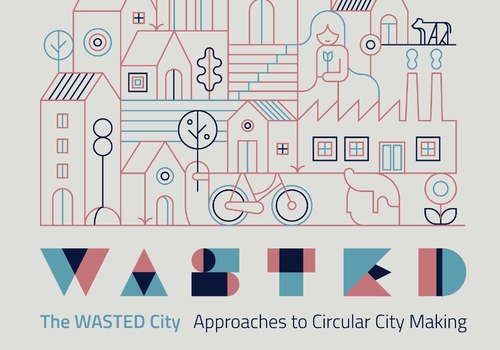WASTED
Part of
Keywords
Local community members give new value to plastic waste
WASTED is a multi-faceted initiative aiming to integrate local community members and actors in giving new value to plastic waste. In this article, the founder of CITIES Foundation Francesca Miazzo gives us insights about the project’s trajectory.

What was the main reason for starting this project?
Since the beginning, CITIES foundation works to engage people in global issues related to urban development. Our method is checking a global issue, and trying to come up with ideas beyond the system by talking to people, to organisations, to businesses that can take part in this issue to help us understand the values behind it.
When we started with WASTED in 2015, plastic was the global problem that we wanted to take a closer look at. It was remarkable to find out that usually people throw away 90% of what they buy. Around the world landfills are being made, and plastic pollution is becoming a more significant problem.
How did you start?
In 2015, we started by working in a small area in Noord. Now we are working in the whole Stadsdeel Noord. In the beginning, we did a lot of analysis and interviews about why people recycle and why they don’t, would it make them happier if they recycled, and also about what do they like and they don’t like about their neighbourhood.
And then we came up with an idea for a project that not only affected the trash separation habit of the residents, but also their consumption habit and behaviour. We noticed that the people started to buy less products with packaging because they started noticing the plastic waste.
What was the crucial moment in the trajectory?
After the success we achieved in 2015, in 2016, we started to test new solutions and to reach to new communities, especially focusing on the material aspect. Our research question then became: “How can you give a value to the waste that you separate, and how can we then make sure that the value stays within the community?”
At that moment, we realised that in essence, we were creating value from the act of separating, instead of the material itself. This is unique. We decided therefore that this would be our focus, and explored this concept deeper to make it accessible to the municipality and to the people.
How did you develop it?
This year, with the support of the municipality, we digitalized our system and started to work more with different materials; plastic, paper, textile and glass. Our approach developed in collaboration with the municipality; we use Amsterdam’s infrastructure for waste, but then we work on finding innovative ways to have more waste collection in their containers. At the same time, the municipality helps us to spread information about this project in communities.
Our intervention is a digital system through which the users can earn digital coins thanks to the waste they separate. It works by providing the users trash bags and trash containers with barcodes on them. The users have a profile page on the system and when they are disposing their waste, they scan the barcode of the container, and they upload a picture of their garbage bag, depending on what type of waste they are separating. After they upload the picture it is checked by our system, and then they receive digital coins. There are stores all over the city where the coins can be spent.
Now there are around 2000 people using this system, and we are also getting contacted by different neighborhoods who want to join this system. There are 40 locations in Amsterdam where the coins can be spent. Especially citizens with low income or students appreciate this project because it lets them access new services.
How did the project proceed?
The poverty department of the municipality noticed the success of WASTED within the people on welfare, and collaborated with us to start another project. Our goal was to reach more people, and so to connect as many as users as possible, we translated our information flyers into Moroccan and Turkish. In 2 months, we developed 6 more locations where the people can show the waste, get the coin and throw the waste in the bin.
We also realised that many residents were detached from the idea that waste can be a resource. To bring this new perspective, we organised workshops to bring people together with their waste. We had 10 workshops in Noord with the people from the community center, about plastic, glass and paper, where we asked people to create something with this and we exhibited their creations at the end of the year.
What are the lessons to look for in these kind of initiatives?
If you want to bring a different perspective on an issue, you can do this by using the existing resources. In our case, to bring awareness on the issue of waste, and to create places where people bring their waste, we made use of Amsterdam’s existing infrastructure. Our project added new functions to the existing infrastructure, and these ideas came up because we are extremely connected to the existing resources. To bring innovation in neighbourhoods, you need to connect with different stakeholders, gebiedsmakelaars and other neighbourhood-based professionals to get different opinions, and to work with the right people to create a new approach.
More information on WASTED:
WASTED website: https://wastedlab.nl/en/#home
Link to the public report: https://issuu.com/citiesthemagazine/docs/wasted-pilot-public-report
Link to article on Cities in Transition EU: https://citiesintransition.eu/cityreport/lets-re-think-amsterdam-through-wasted